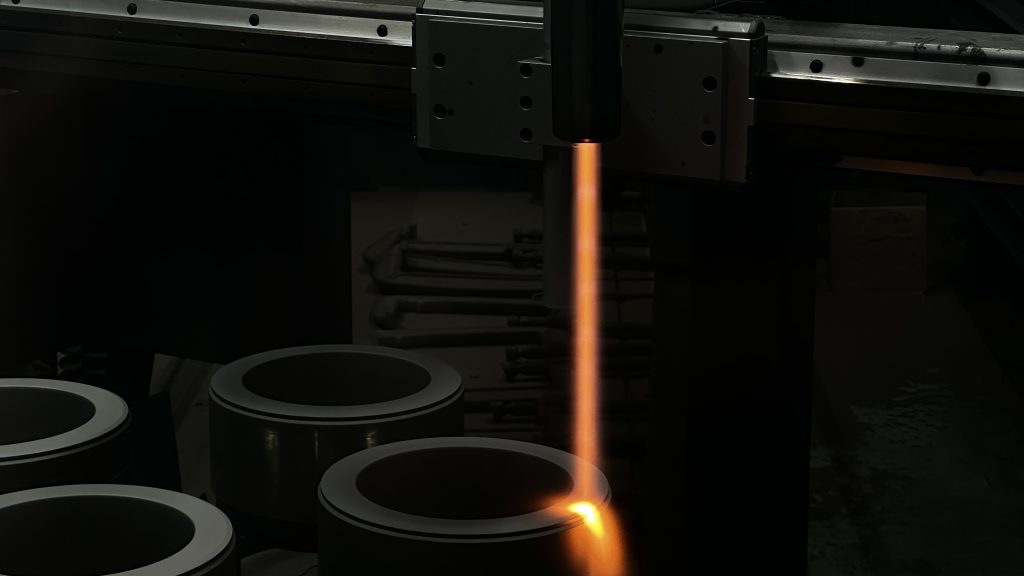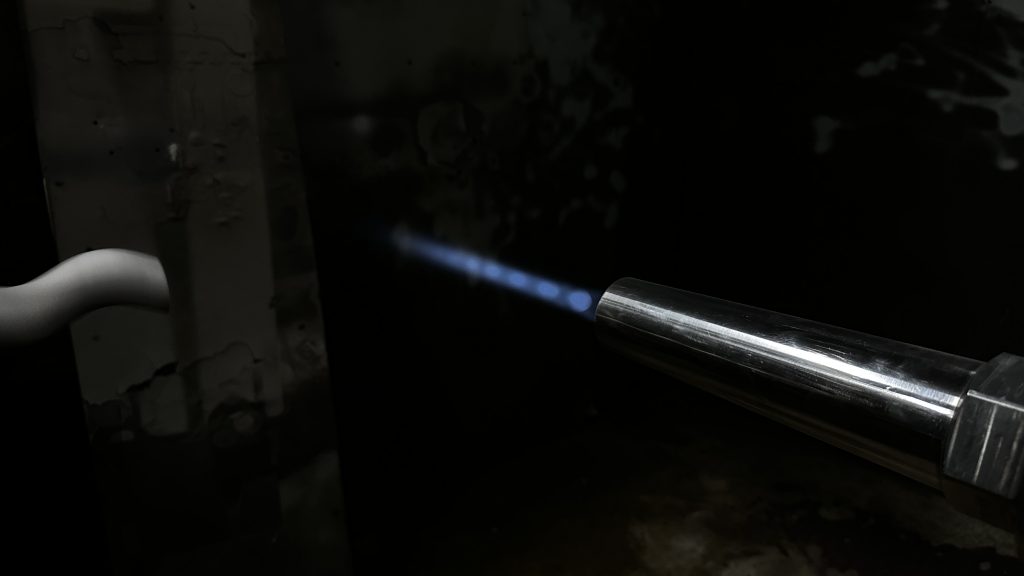Longevity Coatings has invested in advanced HVAF (High-Velocity Air-Fuel) technology, a cutting-edge thermal spray process that enables us to apply carbide coatings with exceptional hardness, wear resistance, and durability surpassing traditional methods. This innovative equipment empowers us to deliver industry-leading coatings, ensuring superior protection for critical components in the toughest environments.
HVAF vs HVOF
High-Velocity Air-Fuel (HVAF) coatings offer a range of benefits that make them a compelling alternative to traditional coating methods, particularly in demanding industrial applications. Unlike HVOF (High-Velocity Oxy-Fuel), HVAF uses compressed air instead of oxygen, resulting in a cooler process that minimizes oxidation and thermal degradation of the coating material. This leads to denser, smoother coatings with improved corrosion and wear resistance, making them highly effective for protecting components in industries such as aerospace, energy, and manufacturing. HVAF coatings also achieve excellent bond strength and lower porosity, enhancing durability and reducing the need for frequent repairs or replacements. Additionally, the process is more cost-effective and environmentally friendly due to reduced fuel consumption and the ability to apply thinner, high-quality layers. Carbide coatings of 0.010–0.050 inches are typical, though very fine feedstock can be used to produce smooth, hard, as-sprayed, or lightly polished coatings with a surface finish as fine as 50 Ra. With the flexibility to use materials such as carbides or metals, HVAF coatings provide tailored solutions that optimize performance and extend the service life of critical equipment.
The Benefits
The hardness of tungsten carbide coatings applied via High-Velocity Air-Fuel (HVAF) versus High-Velocity Oxy-Fuel (HVOF) showcases distinct differences due to the processes’ thermal characteristics. HVAF coating typically achieve higher hardness levels, often exceeding 1250–1500 Vickers (HV300), compared to HVOF coatings, which generally range between 1000–1300 HV300, depending on specific parameters and materials used. This advantage stems from HVAF’s lower operating temperatures, which minimize oxidation and decarburization of tungsten carbide particles during spraying, preserving their inherent hardness and crystalline structure. In contrast, HVOF’s higher flame temperatures can cause slight thermal degradation, reducing the carbide’s hardness by forming softer phases like W₂C or metallic binder enrichment. Most HVOF coatings contain 2–4% oxygen in the form of glassy phases. With HVAF, the flame consumes nearly all available O₂ in the mix, virtually eliminating oxygen from the resulting coating. This has a dramatic effect on a carbide coating’s ability to withstand impact and flexure. As a result, HVAF-applied tungsten carbide coatings offer superior resistance to wear and abrasion, making them particularly valuable for applications like oilfield parts, where maximum hardness translates directly to enhanced durability and performance under extreme conditions.



